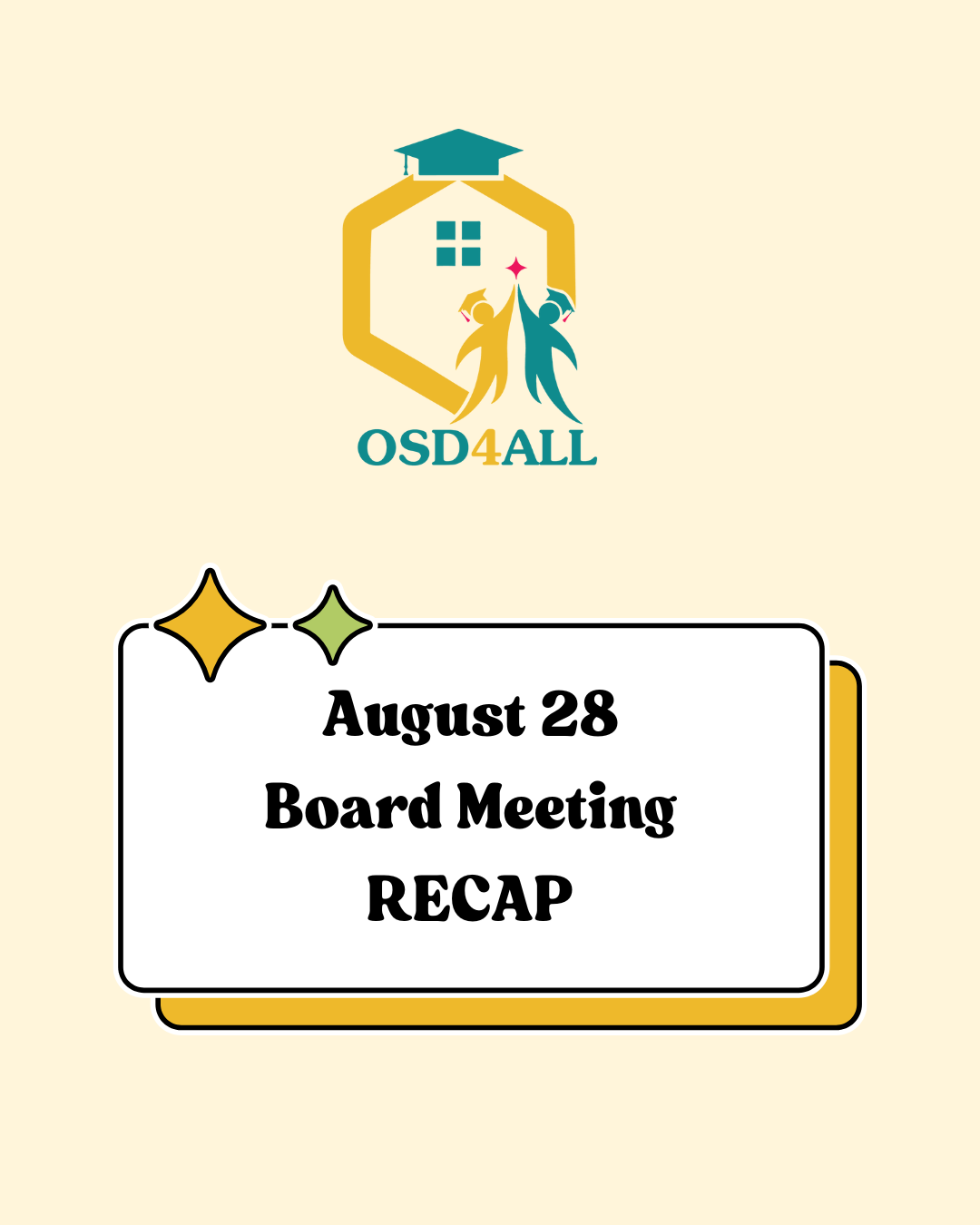The start of a new school year is just as full of potential as a brand new pencil. In the school board meeting on August 28, 2025, the conversation was brimming with the possibilities of the year to come, including highlighting overall higher enrollment and reimagining a new vision for the district.
Superintendent Patrick Murphy started his comments by saying he’s thinking of “continuing to evolve the delivery model for how we do education. What can we do to give more authentic, meaningful learning experiences to our students? How can we make sure that we have enough in our savings so that we’re not in these real dire straits each spring?”
Balancing the budget and the needs of students are certainly common goals. The meeting included discussion about how to achieve them.
OSD Committed to Reboundary
Superintendent Murphy and other OSD staff including interim Reeves Principal Zarate noted how enrollment is up overall compared to projections. With the good news, several people mentioned the need to focus on balancing services and resources across the district, including the need for a reboundary study.
In general, school districts perform a reboundary study every 5 to 10 years, however OSD hasn’t had one since 1993 for Eastside schools and 1998 for Westside schools.
“I would love for the students to be able to go to the school that’s closest to them, and not across town, because it felt better to people 15 years ago,” said Director Seidel.
While changing boundaries for schools doesn’t add more students (i.e. more revenue), it would potentially improve students’ overall school experience.
“We need to make that happen. And we will,” said Superintendent Murphy.
Debate over Class Sizes & Overload
“My concern is with underestimating the ending fund balance. Year after year, it has come in consistently higher [than projected]. This year looks like it’ll be 3 million dollars higher than predicted in the spring, and that would have helped a lot when we were doing the cuts.”
Former OEA President, Jodi Boe
Enrollment and staffing is still in flux for the first few days of school, but there was already discussion about how to balance the budget and increase the ending fund balance for the district. Increasing class sizes is a way to save money, but it can introduce unnecessary strain on staff. Just as Superintendent Murphy said, “We don’t want to unnecessarily overload a class.”
Changing school boundaries would certainly help avoid this.
Speaking of class sizes, former president of Olympia Education Association (OEA) Jodi Boe brought up overload in her public comments in September 2023. At the time, she represented all certificated staff including teachers, counselors, librarians, nurses, speech and language pathologists, occupational therapists, physical therapists, social workers, and psychologists when she said, “There’s a lot of staff on overload across the district. OSD compensates most positions for overload, and that is appreciated. However… smaller class sizes make teachers more effective. They can form stronger connections with students and families. They can be more innovative in their lessons. Discipline is less of an issue. Everything is more pleasant and less stressful. I’m not suggesting taking away the overload pay. I just don’t want anyone to think that that is the preferred solution. 24 or 25 students is a lot easier than 30 or 32.”
Superintendent and Board Push for Higher Ending Fund Balance
Another part of the budget discussion in the meeting was about the ending fund balance, or the money leftover in the bank at the end of the fiscal year. Superintendent Murphy framed his comments around making sure there was enough in savings to avoid future painful cuts. Yet there’s a fine balance between immediate needs and putting money away for a rainy day.
Again, back in September 2023, former OEA President Boe stressed this importance, “My concern is with underestimating the ending fund balance. Year after year, it has come in consistently higher [than projected]. This year looks like it’ll be 3 million dollars higher than predicted in the spring, and that would have helped a lot when we were doing the cuts.”
Money that is available today can make a world of difference for teachers and students.
Setting Expectations for the School Year Ahead
Commenting on the district’s work on restorative practices, Director Flores highlighted her training as a facilitator in the field, noting that, “I think it changes how you teach, and I think it changes how you lead as an administrator. The clear expectations that we all learn as teachers, you know, set it up in the beginning, so that you anticipate when there might be issues, and proactively teach the right responses and behavior, and then also know if inevitably something might happen, how do we restore that student and their family?”
Setting expectations and creating a path forward together is essential work. We’re looking forward to seeing how the district balances the needs of students across our schools in an equitable way and provides clear expectations of what’s to come.


